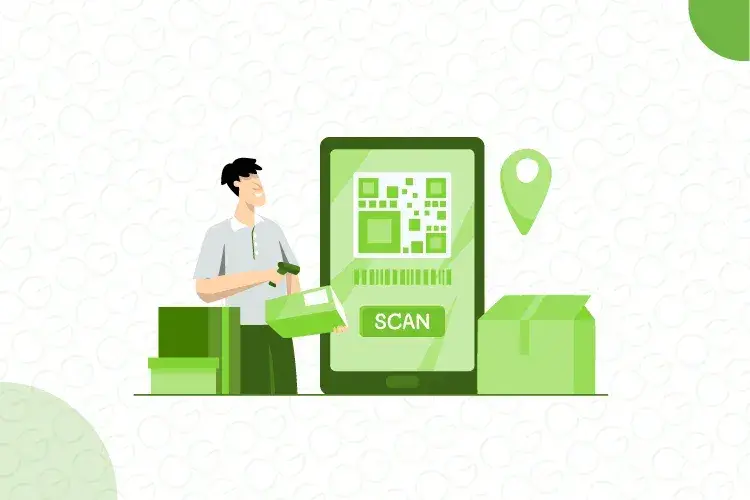5 Mantras for Offline Retail Brands that are Moving Online

As the world becomes more interconnected and consumers increasingly turn to online platforms for their shopping needs, offline brands find themselves at a crossroads. E-commerce sales are expected to reach $6.3 trillion globally in 2023, highlighting the immense scale of the online marketplace. The shift from offline to online retail has become not just a trend but a necessity for survival and growth. This transition offers significant opportunities to expand reach, enhance customer engagement, and drive sales in new ways. However, this transition is not as easy as following a template. Success in the online world requires a well-thought-out approach that considers the unique identity of brands and the dynamic nature of the digital marketplace.
To successfully navigate this shift, offline retail brands need to adopt strategic approaches that cater to the nuances of online consumer behavior and expectations. In this blog, we present five key mantras essential for offline to online retail brands venturing into the online realm.

Take your offline brand online now! Embrace eCommerce & thrive
Mantra 1: Understand Your Customer Base
The foundation of any successful online strategy begins with a deep understanding of the customer base. Offline to online retail brands already have valuable insights from their in-store interactions, but online behavior can differ significantly. Understanding the online customer base not only helps in crafting personalized marketing strategies but also informs product assortment decisions, ensuring relevance and resonance.
- Customer Research and Insights:
- Surveys and Feedback- Gather feedback from existing customers through surveys to understand their preferences, shopping habits, and expectations from an online store.
- Focus Groups- Engage with focus groups to gain qualitative insights into what motivates their purchasing decisions and how they perceive online shopping experiences.
- Social Media Analytics- Leverage social media platforms to analyze demographic data, engagement metrics, and customer feedback for O2O retail business growth.
- Segmentation for Targeted Marketing:
- Segmentation Strategies: Divide the customer base into meaningful segments based on demographics, behaviour, and preferences to personalize the marketing efforts.
- Personalized Assortments: Tailor the product assortments to cater to the specific needs and preferences of different customer segments, avoiding a one-size-fits-all approach.
Mantra 2: Optimize Your E-commerce Platform
Moving from offline to online retail requires careful planning and execution of the e-commerce platform. Here are key steps to optimize this transition:
- Identifying the Right Platform for the Business- Choosing the appropriate e-commerce platform is crucial. Consider factors such as scalability, customization options, ease of integration with other systems, and affordability. Popular options include Shopify, WooCommerce, Magento, and BigCommerce, each offering unique features suited to different business needs. Meticulously analyzing and pinpointing the most apt platform for their unique products or services is a necessity that offline brands cannot overlook. This process requires them to deeply understand where their customer base congregates and choose to shop.
- Establishing a Quality Website Design- The website stands as the storefront for digital transformation for retail. The creation of a digital storefront demands more than just a functional website. It requires the development of a virtual space that mirrors the brand’s ethos and captivates visitors from the moment they land on the homepage. Ensure that the design reflects the brand identity and values. A clean, intuitive layout with easy navigation enhances user experience and encourages conversion. Clear product information, apt images, and secure payment options further contribute to an intuitive online shopping experience.
- Integration of Payment Gateways and Security Measures - Offer secure payment options to accommodate customer preferences. Integration with trusted payment gateways enhances transaction security and builds customer trust. Implement robust security measures to protect customer data.
Key Features of a User-Friendly E-commerce Site
In today's digital age, the e-commerce landscape is increasingly competitive, making it crucial for offline to online retail brands to create an exceptional user experience. A user-friendly e-commerce site attracts more visitors and encourages repeat business and customer loyalty.
Key features include:
- Navigation: Simplify browsing with clear categories and search functionality.
- Load Times: Optimize page load speeds to reduce bounce rates and improve SEO.
- Mobile Responsiveness: With a growing number of users shopping on mobile devices, ensure the site is fully responsive.
- SEO and Content Management: Implement SEO best practices to increase visibility in search engines. Regularly update content to keep the site relevant and engaging.
.webp)
Mantra 3: Leverage Omnichannel Strategies
Transaction from offline to online retail doesn’t mean abandoning the offline presence. Omnichannel strategies integrate both digital and physical channels to deliver a seamless customer experience.
- Start Small with Online SKUs and Grow Over Time: Avoid overwhelming the online store with all offline SKUs at once. Start with a curated selection and gradually expand based on customer demand and operational capacity. This approach maintains focus and ensures a manageable transition.
- Ensure a Seamless Customer Experience Across Channels: Integrate Point-of-Sale (POS), Enterprise Resource Planning (ERP), Warehouse Management System (WMS), and Order Management System (OMS) with the e-commerce platform. This integration enables real-time inventory updates, order processing, and consistent pricing across all channels.
- Importance of Inventory Management and Real-Time Updates: Accurate inventory management is crucial for fulfilling orders promptly and minimizing stockouts. Real-time updates prevent overselling and improve overall operational efficiency.
- Sync Offline and Online Checkouts: Research by the Baymard Institute shows that the average checkout process is 5 steps long leading to a 68% abandonment rate. Harmonize the checkout processes for retail business growth. Allow customers to return online purchases in-store and vice versa, facilitating flexibility and convenience.
- Enhance Shopping with Physical, Multi-Sensory Experiences: Augment the online shopping experience with physical, multi-sensory elements. For instance, offer virtual tours of the physical store, incorporate product demonstrations, or provide personalized recommendations based on past purchases.
Benefits of Omnichannel Retailing
Omnichannel retailing, a strategy that integrates various shopping methods available to consumers, has revolutionized the offline to online retail industry. By providing a seamless shopping experience across online and offline channels, omnichannel retailing meets the evolving needs and preferences of today’s tech-savvy consumers. This approach enhances customer satisfaction and offers numerous advantages to retailers.
Let's look at some of the benefits of Omnichannel retailing in detail:
- Enhanced Customer Experience: Omnichannel retailing provides a seamless and consistent shopping experience across various channels. Customers can easily switch between channels, ensuring a more convenient and satisfying shopping experience.
- Increased Sales and Revenue: By offering multiple purchasing options, retailers can reach a broader audience and cater to different customer preferences. This leads to higher sales and revenue as customers are more likely to make purchases through their preferred channels.
- Improved Customer Insights and Personalization: Omnichannel strategies enable retailers to collect data from various touchpoints. Retailers can then use this information to personalize marketing efforts, tailor product recommendations, and enhance customer engagement.
- Higher Customer Retention and Loyalty: Providing a consistent and positive shopping experience across all channels helps build stronger customer relationships. Satisfied customers are more likely to return, leading to increased customer retention and loyalty.
- Optimized Inventory Management: Omnichannel retailing allows for better inventory management and distribution. Retailers can leverage real-time data to optimize stock levels, reduce overstock and stockouts, and fulfill orders more efficiently.

Connect online and in-store seamlessly with our omnichannel solutions!
Mantra 4: Invest in Digital Marketing
Moving from offline to online retail requires a robust digital marketing strategy to establish and grow the brand presence in the digital realm.
Here’s how businesses can effectively navigate this transition:
- Leverage Essential Digital Marketing Channels:
- Utilize platforms like Facebook, Instagram, Twitter, and LinkedIn to engage with the audience, showcase products, and run targeted advertising campaigns.
- Build an email list and send personalized campaigns to nurture leads, announce promotions, and drive sales.
- Use Google Ads, Bing Ads, or social media ads to drive targeted traffic to the online store.
- Optimize the website content to rank higher in search engine results, increasing organic traffic.
- Strategies for Building a Strong Online Presence:
- Develop a consistent brand voice and visual identity across all digital channels for digital transformation for retail.
- Create high-quality content that educates, entertains, or solves problems for the target audience.
- Engage with the audience through interactive content such as polls, quizzes, and live videos.
- Collaborate with influencers or industry experts to reach a wider audience.
- Cross-Channel Marketing to Build Awareness:
- Integrate the online and offline marketing efforts to create a seamless brand experience.
- Use offline events or promotions to drive traffic to the online store and vice versa.
- Implement remarketing strategies to reconnect with visitors who have shown interest but haven’t made a purchase yet.
- Importance of Data-Driven Marketing and Analytics:
- Utilize tools like Google Analytics, Facebook Insights, or CRM data to understand customer behavior and preferences.
- Make informed decisions based on metrics such as conversion rates, bounce rates, and customer lifetime value for continuous retail business growth.
- Continuously optimize campaigns based on data insights to maximize ROI and improve customer acquisition and retention.

Achieve online retail success with our tailored strategies
Mantra 5: Provide Excellent Customer Service
For offline to online retail, customer service becomes a cornerstone of the brand's reputation and success. Here’s how to excel in this area:
- Role of Customer Service in Online Retail:
- Provide prompt responses to customer inquiries through channels like live chat, email, or social media messaging.
- Offer personalized support by understanding customer preferences and purchase history.
- Resolve issues quickly and efficiently to enhance customer satisfaction and loyalty.
- Tools and Platforms for Efficient Customer Support:
- Implement live chat software to offer real-time assistance and resolve queries instantly.
- Utilize chatbots for handling routine inquiries and directing customers to relevant resources for continuous retail business growth.
- Use CRM (Customer Relationship Management) systems to track customer interactions, manage feedback, and streamline support processes.
- Importance of After-Sales Service and Handling Returns:
- Offer clear policies for returns, exchanges, and refunds to build trust with customers.
- Provide proactive updates on order status and shipping information to keep customers informed.
- Use feedback from returns and customer interactions to improve products and services continuously.
.webp)
How Ginesys One Can Help
Ginesys One offers comprehensive retail management solutions designed to transition smoothly from offline to online retail. With robust features and a user-friendly interface, Ginesys One supports retailers in navigating the complexities of e-commerce while optimizing operational efficiency.
- Inventory Management: Real-time tracking and synchronization across channels to prevent stockouts and streamline fulfillment.
- POS Integration: Seamless integration of online and offline sales data for unified reporting and customer insights.
- Omnichannel Capabilities: Tools to create a seamless shopping experience across multiple channels, enhancing customer satisfaction and loyalty.
Benefits of Choosing Ginesys for Your Online Retail Needs:
- Comprehensive Retail Management Solutions Under One Platform: Simplify operations with integrated functionalities from inventory to sales.
- Scalability for Retail Business Growth: Flexible solutions that grow with the business, adapting to increasing online demands.
- Dedicated Customer Support and Continuous Updates: Access to expert support and regular updates to stay ahead in a competitive market.
- Cost-effectiveness and ROI: Efficient resource allocation and measurable returns on investment through optimized processes.

Navigate retail's digital frontier with confidence
The journey from offline to online retail requires careful planning and execution, guided by strategic principles. The top five elements discussed in this blog emphasize the need to take a coherent strategy while entering the online marketplace. Choosing the correct platform, creating a visually appealing website, optimizing search engines, and using social media are all critical elements for success.
As organizations embrace the digital age’s prospects, the necessity for a dependable and innovative partner becomes critical. In this sense—Ginesys stands out as a go-to partner—with a distinct combination of strategy, technology, design, and expertise. By partnering with Ginesys, offline to online retail brands can leverage advanced retail management solutions to navigate this transformation effectively.
Start your online journey today with Ginesys and unlock the full potential of e-commerce. Get in touch now!



